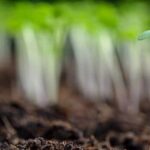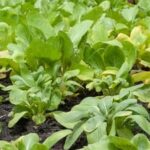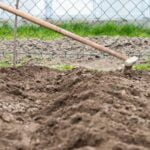Container gardening has become increasingly popular, especially among urban dwellers and those with limited space. This innovative approach to cultivating plants allows individuals to bring greenery and vegetation into their homes, balconies, or patios. In this article, we will explore the world of creative container gardening vegetables. From selecting the right containers to troubleshooting common problems, we will provide you with a comprehensive guide to growing your own fresh produce in a confined setting.
One of the key benefits of growing vegetables in containers is the ability to control the environment in which they grow. By utilizing containers, gardeners can manipulate factors such as soil quality, drainage, and sunlight exposure to ensure optimal growth for their plants. Additionally, container gardening offers flexibility in terms of placement – you can move your plants around to follow the sun or protect them from harsh weather conditions.
When it comes to choosing the right containers for your vegetable garden, there are numerous options available. From traditional terra cotta pots to upcycled items like crates or buckets, the possibilities are endless. The key is to select containers that provide adequate space for root growth and proper drainage. In the following sections, we will delve deeper into selecting the best vegetables for container gardening and provide essential tips and tools for success in your creative container gardening endeavors.
Benefits of Growing Vegetables in Containers
Maximizing Small Spaces
For individuals with limited outdoor space or only a balcony or patio available, container gardening provides a fantastic opportunity to grow their own vegetables. With the use of containers, you can make the most out of small areas and even bring your vegetable garden indoors during colder months. This flexibility allows urban dwellers and those with minimal yard space to still enjoy the joys of gardening and homegrown produce.
Portability and Accessibility
One of the significant benefits of growing vegetables in containers is the portability they offer. Whether you need to move your plants to follow sunlight throughout the day or bring them indoors during inclement weather, container gardening makes it easy to keep your plants happy and healthy. Additionally, having your vegetables in containers at an accessible height reduces strain on your back and knees when tending to your garden, making it a great option for individuals with physical limitations.
Pest Control and Disease Prevention
Container gardening also helps in controlling pests and diseases that may affect your vegetable plants. By keeping them off the ground in containers, you reduce the risk of soil-borne illnesses affecting your crops. Additionally, pots can be moved away from other infected plants easily, limiting the spread of diseases throughout your entire garden. This level of control over pests and diseases ultimately leads to healthier plants and a higher success rate for your vegetable harvesting efforts.
Choosing the Right Containers for Your Vegetable Garden
Container gardening is a versatile and convenient way to grow vegetables, especially for those with limited space or poor soil quality. When it comes to choosing the right containers for your vegetable garden, there are a few key factors to consider. Firstly, size matters.
Different vegetables require different amounts of space for their roots to grow, so make sure your containers are large enough to accommodate the specific vegetables you want to plant. Additionally, the material of the container is important. Porous materials like terracotta can dry out quickly, so be prepared to water more frequently if you choose these types of pots.
In addition to size and material, drainage is another crucial consideration when selecting containers for your vegetable garden. Proper drainage is essential to prevent waterlogged soil, which can lead to root rot and other issues. Look for containers with drainage holes in the bottom or be prepared to drill your own if necessary. Furthermore, consider the weight of the container, especially if you plan on moving it around frequently to optimize sunlight exposure for your plants.
If you’re feeling creative, there are endless possibilities for unique container gardening designs. You can repurpose old buckets, baskets, or even household items like wheelbarrows or teacups as planters for your vegetables. Just make sure whatever container you choose has adequate drainage and enough room for your veggies to thrive. Embrace your creativity and experiment with different containers to create a visually stunning and productive vegetable garden that will be both practical and aesthetically pleasing.
| Key Considerations | Recommendations |
|---|---|
| Size of Containers | Ensure they are large enough for specific vegetable types. |
| Container Material | Avoid materials that may dry out too quickly. |
| Drainage | Choose containers with proper drainage holes or add them yourself. |
Selecting the Best Vegetables for Container Gardening
One of the most popular vegetables for container gardening is tomatoes. Tomatoes come in various sizes and varieties, making them versatile for different types of containers. Choose determinate tomato varieties for smaller containers, as they have a more compact growth habit. Other popular vegetables for container gardening include peppers, lettuce, radishes, and herbs such as basil and parsley.
When selecting vegetables for your container garden, consider planting a mix of quick-growing crops like lettuce and radishes with longer-season crops like tomatoes. This way, you can enjoy a continuous harvest throughout the growing season. Additionally, make sure to read the seed packets or plant tags to understand each vegetable’s specific growing requirements such as spacing, sunlight needs, and watering habits.
| Vegetable | Container Suitability |
|---|---|
| Tomatoes | Various sizes; determinate varieties best for small containers |
| Peppers | Suitable for medium to large containers |
| Lettuce & Radishes | Quick-growing; suitable for small containers |
| Herbs (Basil & Parsley) | Compact growth; suitable for small containers or hanging baskets |
Essential Tools and Supplies for Creative Container Gardening of Vegetables
When it comes to embarking on a journey of creative container gardening vegetables, having the right tools and supplies is essential for success. Whether you are a seasoned gardener or a beginner, having the proper equipment can make the process more efficient and enjoyable. Here are some key essentials to consider for your vegetable container garden:
Quality Potting Mix
One of the most important components for successful container gardening is the soil mix. Opt for a high-quality potting mix that is well-draining and fertile to provide your vegetables with the nutrients they need to thrive. Avoid using regular soil from your garden as it may compact in containers and hinder root growth.
Containers
Choosing the right containers is crucial for the health and productivity of your vegetable plants. Select containers that are the appropriate size for the vegetables you plan to grow, ensuring they have enough room for roots to spread out and access to adequate drainage holes at the bottom.
Watering Tools
Consistent watering is key to supporting healthy growth in container-grown vegetables. Invest in a quality watering can or hose attachment with a gentle spray nozzle to ensure even distribution of water throughout your containers. Additionally, consider using a moisture meter to monitor soil moisture levels and prevent overwatering or underwatering your plants.
By stocking up on these essential tools and supplies, you will be well-equipped to cultivate a thriving vegetable container garden filled with an array of fresh produce that you can enjoy all season long. Remember, creativity knows no bounds when it comes to container gardening – so don’t be afraid to experiment with different combinations of vegetables and unique container designs to create a one-of-a-kind growing experience.
Tips for Success
When it comes to successful container gardening of vegetables, proper care and maintenance are key. Watering, sunlight exposure, and fertilizing techniques play a crucial role in the health and productivity of your plants. Here are some tips to help you achieve success in these areas:
- Watering: Make sure to water your vegetable plants regularly, as containers tend to dry out faster than traditional garden beds. Check the soil moisture level by sticking your finger into the soil; if it feels dry about an inch below the surface, it’s time to water. Be mindful not to overwater, as this can lead to root rot.
- Sunlight: Most vegetables require at least 6-8 hours of sunlight per day to thrive. Choose a location for your containers that receives adequate sunlight or consider using grow lights if natural light is limited. Rotate your containers occasionally to ensure all sides of the plants receive equal sun exposure.
- Fertilizing Techniques: To keep your container-grown vegetables healthy and productive, it’s essential to provide them with proper nutrients. Use a balanced fertilizer formulated for vegetables and follow the manufacturer’s instructions for application frequency. Consider using organic fertilizers for a more sustainable option.
By following these tips for watering, sunlight exposure, and fertilizing techniques, you can help ensure that your creative container gardening vegetables flourish and produce bountiful harvests. Remember that each plant may have specific requirements, so monitor their progress closely and make adjustments as needed for optimal growth and productivity.
Creative Ideas for Unique Container Gardening Designs
Container gardening offers endless possibilities for unique and creative designs, making it a fun and exciting way to grow vegetables in limited spaces. With a little imagination and some basic supplies, you can turn your container garden into a beautiful and productive oasis. Here are some creative ideas to help you design your own stunning vegetable containers:
- Vertical Gardens: Utilize vertical space by growing vining vegetables like cucumbers, peas, or tomatoes on trellises or stakes. This not only saves space but also adds height and visual interest to your garden.
- Repurposed Containers: Get creative by using unexpected items as planters, such as old tires, buckets, or even kitchen utensil holders. Not only does this add a unique touch to your garden, but it also helps reduce waste.
- Colorful Containers: Choose containers in a variety of colors and sizes to create a vibrant and eye-catching display. Mix and match different shapes and textures for added visual appeal.
In addition to these ideas, consider creating themed container gardens based on culinary preferences or color schemes. For example, you could plant an Italian-themed garden with tomatoes, basil, and oregano in rustic terracotta pots. Or opt for a rainbow garden with colorful peppers, carrots, and beets in bright containers. Let your creativity run wild as you design your own unique container garden masterpiece.
Remember to take into account the specific needs of each vegetable when designing your containers, such as adequate drainage holes, proper spacing between plants, and appropriate soil mixture. By incorporating these creative ideas into your container gardening setup, you can transform your patio or balcony into a lush and bountiful vegetable paradise that will delight both the eyes and taste buds.
Troubleshooting Common Container Gardening Problems
Container gardening can be a rewarding experience, but it does come with its own set of challenges. One common issue that gardeners may encounter is overwatering or underwatering their plants. It’s essential to strike the right balance to ensure healthy growth.
To prevent overwatering, make sure your containers have proper drainage holes and only water when the top inch of soil feels dry to the touch. On the other hand, underwatering can lead to wilted plants and stunted growth, so be sure to monitor the moisture levels regularly.
Another common problem in container gardening is nutrient deficiencies. Since containers have limited space for root growth, nutrients can quickly become depleted. To combat this issue, regularly feed your container vegetables with a balanced fertilizer specifically designed for edible plants. Additionally, consider adding compost or organic matter to replenish nutrients in the soil. Keep an eye out for signs of nutrient deficiencies such as yellowing leaves or poor fruit development, and adjust your fertilizing routine accordingly.
Pests and diseases can also wreak havoc on your container vegetable garden if left unchecked. Common pests like aphids, spider mites, and caterpillars can damage plants and reduce yields. To prevent infestations, regularly inspect your plants for any signs of pests and take action promptly.
There are natural remedies like neem oil or insecticidal soap that can help control pests without harming your vegetables. Disease prevention is equally important – avoid overhead watering to reduce the spread of fungal diseases, and practice good sanitation by removing any infected plant material promptly to prevent further spread. By staying vigilant and proactive in addressing these common problems, you can enjoy a bountiful harvest from your creative container gardening vegetables.
Harvesting and Enjoying the Fruits of Your Labor
Container gardening offers a convenient and rewarding way to grow your own vegetables, even in limited spaces. As your container-grown vegetables begin to flourish, it is essential to know when and how to harvest them for optimal taste and freshness. Here are some tips for harvesting and enjoying the fruits of your labor from your creative container gardening vegetables.
When it comes to harvesting vegetables from containers, timing is key. For most vegetables, the ideal time to harvest is when they have reached their mature size but are still tender and flavorful. This may vary depending on the specific vegetable you are growing, so be sure to research the optimal harvesting times for each type of vegetable in your container garden.
To ensure that your vegetables maintain their peak flavor and quality, it is best to harvest them early in the morning before the heat of the day sets in. Use a sharp pair of garden scissors or pruners to gently cut the vegetables from the plant, being careful not to damage any neighboring fruits or stems.
Remember that frequent harvesting encourages continuous growth and production from your container-grown vegetables throughout the growing season. So don’t be afraid to enjoy the bounty of your efforts regularly.
Conclusion
In conclusion, creative container gardening vegetables offer a convenient and versatile way to grow your own produce even in limited spaces. By embracing the concept of container gardening, individuals can enjoy the beauty of lush greenery and bountiful harvests right at their doorstep. The benefits of growing vegetables in containers are numerous, from having control over the soil quality to being able to move the plants according to sunlight needs.
Choosing the right containers is crucial for the success of your vegetable garden. Whether it’s traditional terracotta pots, hanging baskets, or repurposed household items, there are endless options for creating unique and visually appealing designs. Pairing the containers with the best vegetables suited for container gardening ensures a successful harvest. With proper watering, sunlight exposure, and fertilizing techniques, your container garden will thrive and provide you with fresh produce throughout the growing season.
As you embark on your journey of creative container gardening vegetables, don’t be afraid to think outside the box and experiment with different planting arrangements and combinations. Troubleshooting common problems such as pests or diseases can also be part of the learning process and ultimately lead to a more successful harvest.
Remember to savor the fruits of your labor by harvesting your homegrown vegetables and enjoying them in delicious meals that you’ve prepared yourself. Container gardening not only brings productivity but also a sense of pride and satisfaction in cultivating your own food.
Frequently Asked Questions
What Vegetables Are Best to Grow in Containers?
Vegetables that are best to grow in containers include tomatoes, peppers, lettuce, spinach, and herbs like basil and parsley. These plants are well-suited for the limited space of a container and thrive with proper care.
What Vegetables Grow Well Together in a Container?
Certain vegetables grow well together in a container due to their similar sunlight, water, and soil requirements. For example, tomatoes and basil complement each other nicely as they have compatible growing conditions and can even enhance each other’s flavors when grown side by side.
What Are Cool Vegetables for Garden?
Cool vegetables for a garden include crops such as broccoli, cauliflower, kale, carrots, radishes, and peas. These vegetables thrive in cooler temperatures and can often be planted early in the spring or late in the fall for a successful harvest.

If you’re looking to get into vegetable gardening, or are just looking for some tips on how to make your current garden better, then you’ve come to the right place! My name is Ethel and I have been gardening for years. In this blog, I’m going to share with you some of my best tips on how to create a successful vegetable garden.





